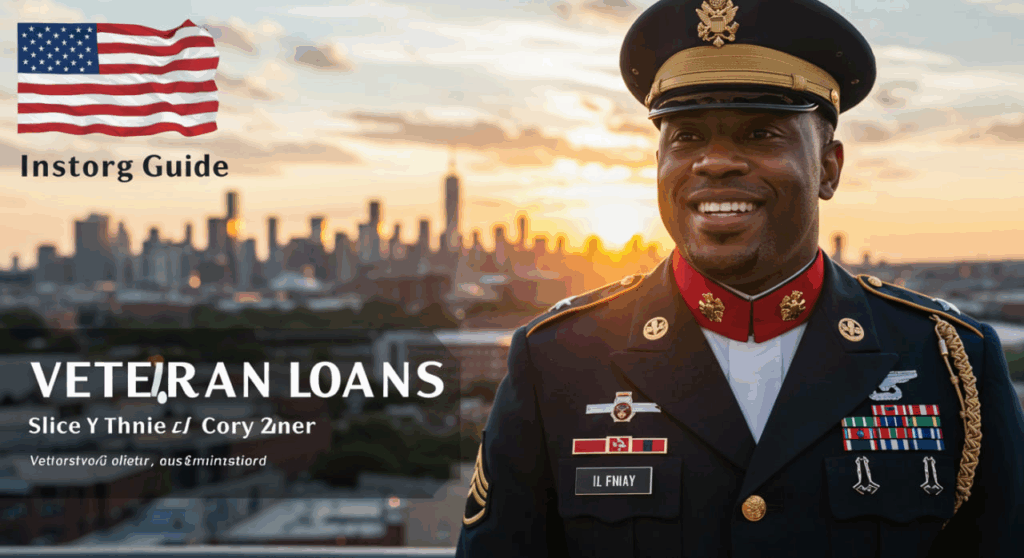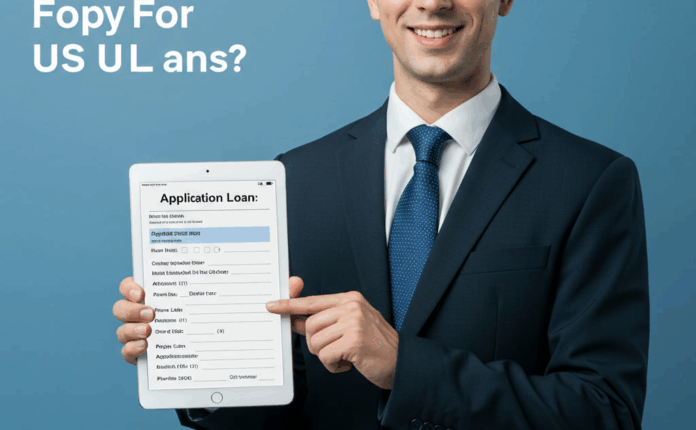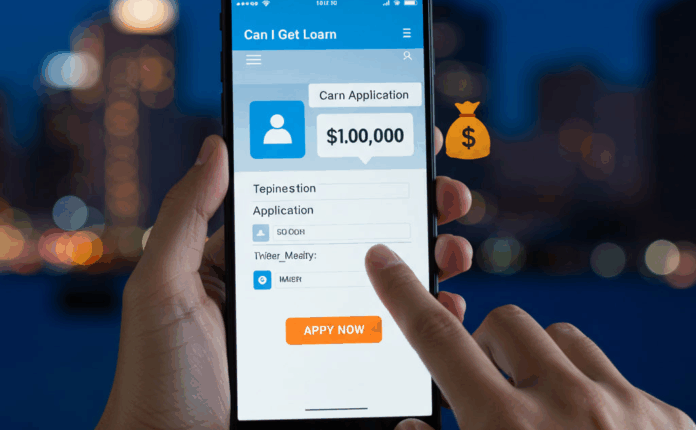Veteran loans are a lifeline for those who’ve served our country, offering financial support to help veterans and their families achieve homeownership, fund education, or grow a business. Backed by the U.S. Department of Veterans Affairs (VA), these loans come with unique benefits like lower interest rates, no down payment requirements, and flexible eligibility criteria, making them a powerful tool for veterans transitioning to civilian life. But navigating the world of veteran loans can feel overwhelming, with various programs, requirements, and benefits to understand. This guide dives deep into the types of veteran loans, their advantages, eligibility criteria, and practical steps to secure one, all while ensuring you’re equipped with the knowledge to make informed decisions. Whether you’re a first-time homebuyer or a veteran entrepreneur, this article will walk you through everything you need to know to leverage these benefits effectively.
Understanding Veteran Loans
What Are Veteran Loans?
Veteran loans are specialized financial products designed to support active-duty service members, veterans, and eligible surviving spouses. Administered primarily through the VA, these loans aim to ease the financial burdens of homeownership, education, and business ventures. The most well-known type is the VA Home Loan, which helps veterans purchase or refinance a home with favorable terms. Other programs, like the Native American Direct Loan (NADL) and VA-backed business loans, cater to specific needs within the veteran community. What sets these loans apart is the VA’s backing, which reduces the risk for lenders, allowing them to offer better rates and terms compared to conventional loans. This makes veteran loans an attractive option for those who qualify, providing a pathway to financial stability and opportunity.
Why Veteran Loans Matter
For many veterans, transitioning to civilian life comes with financial challenges, from securing stable housing to pursuing higher education or starting a business. Veteran loans address these hurdles by offering tailored solutions that recognize the sacrifices made during service. For instance, the VA Home Loan’s no-down-payment feature can make homeownership accessible for veterans who may not have substantial savings. Similarly, business loans through the Small Business Administration (SBA) with VA support can empower veteran entrepreneurs to launch or expand their ventures. These programs not only provide financial relief but also honor veterans’ contributions by giving them tools to build a secure future. Understanding the full scope of these benefits can help veterans maximize their opportunities and avoid common pitfalls in the loan process.
Types of Veteran Loans
VA Home Loans
The VA Home Loan is the cornerstone of veteran loan programs, designed to help veterans, active-duty service members, and eligible surviving spouses purchase or refinance a home. One of its standout features is the ability to buy a home with no down payment, a rarity in the mortgage world. Additionally, VA loans don’t require private mortgage insurance (PMI), which can save borrowers hundreds of dollars monthly. Interest rates are typically lower than those of conventional loans, and the VA’s flexible credit requirements make it easier for veterans with less-than-perfect credit to qualify. Whether you’re eyeing a single-family home, a condo, or a multi-unit property (up to four units), the VA Home Loan offers versatility and cost savings, making it a top choice for homeownership.
Key Features of VA Home Loans
- No Down Payment: Unlike conventional loans, which often require 5-20% down, VA loans allow qualified borrowers to finance 100% of the home’s value.
- No PMI: Since the VA guarantees a portion of the loan, lenders don’t require PMI, reducing monthly costs.
- Competitive Interest Rates: VA loans often have lower rates due to the government’s backing, saving borrowers thousands over the loan’s life.
- Flexible Credit Requirements: The VA doesn’t set a minimum credit score, though lenders typically look for a score of 620 or higher.
- Funding Fee: A one-time fee (usually 1.25-3.3% of the loan amount) helps sustain the program, but it can be rolled into the loan or waived for certain disabled veterans.
Native American Direct Loan (NADL)
The Native American Direct Loan is a lesser-known but vital program for Native American veterans or their spouses looking to buy, build, or improve a home on federal trust land. Administered directly by the VA, this loan offers similar benefits to the standard VA Home Loan, including no down payment and low interest rates. The NADL is unique because it’s tailored to the specific needs of Native American communities, where homeownership on trust land can be complicated due to legal restrictions. Veterans must meet standard VA eligibility requirements and provide documentation proving their or their spouse’s enrollment in a federally recognized tribe. This program is a game-changer for Native American veterans seeking to establish roots in their communities.
SBA Veterans Advantage Loans
For veterans with entrepreneurial ambitions, the Small Business Administration offers Veterans Advantage Loans through its 7(a) and 504 loan programs. These loans provide favorable terms, such as reduced fees, to help veterans start or grow small businesses. The SBA’s 7(a) loan, for example, can be used for working capital, equipment purchases, or debt refinancing, with loan amounts up to $5 million. The 504 loan focuses on fixed assets like real estate or machinery. Veterans receive a 50% reduction in the SBA’s guaranty fee, making these loans more affordable. To qualify, the business must be at least 51% owned by a veteran or active-duty service member, and standard SBA credit and eligibility criteria apply.
Eligibility and Application Process
Who Qualifies for Veteran Loans?

Eligibility for veteran loans depends on the specific program but generally includes active-duty service members, veterans, reservists, National Guard members, and certain surviving spouses. For VA Home Loans and NADLs, you’ll need a Certificate of Eligibility (COE) from the VA, which verifies your service history. Typical requirements include:
- Active-Duty Service: At least 90 consecutive days during wartime or 181 days during peacetime.
- National Guard/Reservists: At least six years of service or 90 days of active duty during wartime.
- Surviving Spouses: Unremarried spouses of service members who died in service or from a service-related disability may qualify.
- Credit and Income: While the VA doesn’t set strict credit score minimums, lenders typically require a score of 620 and stable income to cover mortgage payments.
For SBA Veterans Advantage Loans, eligibility hinges on veteran ownership of the business and meeting SBA’s credit and business size standards. Always check with the VA or SBA for the most up-to-date requirements, as they can vary slightly.
How to Apply for a Veteran Loan
Applying for a veteran loan involves several steps, but the process is streamlined to make it accessible. Here’s a step-by-step guide for a VA Home Loan, which can be adapted for other programs:
- Obtain a Certificate of Eligibility (COE): Request your COE through the VA’s eBenefits portal or ask your lender to obtain it for you. You’ll need to provide proof of service, such as a DD-214 form.
- Choose a VA-Approved Lender: Not all lenders offer VA loans, so select one experienced in VA financing. They’ll guide you through pre-qualification and the application process.
- Get Pre-Approved: Provide financial documents (e.g., pay stubs, tax returns, bank statements) to determine how much you can borrow.
- Find a Home and Make an Offer: Work with a real estate agent familiar with VA loans to find a property that meets VA’s Minimum Property Requirements (MPR).
- Complete the Loan Application: Submit your financial information and property details to the lender. The VA will appraise the property to ensure it meets standards.
- Close the Loan: Sign the paperwork, pay any closing costs or funding fees (which can be rolled into the loan), and finalize the purchase.
For SBA loans, the process involves submitting a business plan, financial statements, and proof of veteran ownership to an SBA-approved lender. The VA and SBA websites offer detailed resources to guide applicants.
Benefits and Considerations
Why Choose a Veteran Loan?
Veteran loans stand out for their borrower-friendly terms, making them a smart choice for eligible individuals. The no-down-payment feature of VA Home Loans is a major draw, allowing veterans to enter the housing market without years of saving. Lower interest rates and the absence of PMI further reduce costs, while flexible credit requirements open the door for those with less-than-ideal credit histories. For business owners, SBA Veterans Advantage Loans offer reduced fees and access to substantial funding, which can be pivotal for launching or scaling a business. These benefits collectively make veteran loans a powerful tool for financial empowerment, tailored to the unique needs of those who’ve served.
Potential Challenges to Watch For
While veteran loans offer significant advantages, there are challenges to consider. The VA’s funding fee, though often rolled into the loan, adds to the overall cost and may be a factor for budget-conscious borrowers. Properties purchased with VA loans must meet strict Minimum Property Requirements, which can limit options in competitive markets or for fixer-uppers. For SBA loans, the application process can be rigorous, requiring detailed business plans and financial documentation, which may be daunting for first-time entrepreneurs. Additionally, not all lenders are well-versed in veteran loan programs, so finding an experienced lender is critical to avoid delays or missteps.
Tips for Success
To maximize your chances of securing a veteran loan and using it effectively, consider these practical tips:
- Research Lenders Thoroughly: Choose a lender with a strong track record in VA or SBA loans to ensure a smooth process.
- Maintain Good Credit: While VA loans are flexible, a higher credit score can secure better rates. Pay down debts and check your credit report for errors before applying.
- Understand Property Requirements: For VA Home Loans, ensure the property meets MPRs to avoid appraisal issues.
- Leverage VA Resources: The VA’s website and local VA offices offer free counseling and resources to guide you through the process.
- Plan for Closing Costs: Even with no down payment, you’ll need to cover closing costs or the funding fee unless negotiated with the seller or rolled into the loan.
- Consult a Financial Advisor: For SBA loans, work with a financial advisor or SBA resource partner to craft a solid business plan.
By preparing thoroughly and leveraging available resources, you can navigate the veteran loan process with confidence and make the most of these valuable benefits.
FAQ
What is the difference between a VA Home Loan and a conventional loan?
A VA Home Loan is backed by the Department of Veterans Affairs, offering benefits like no down payment, no private mortgage insurance, and lower interest rates compared to conventional loans. Conventional loans typically require a down payment (5-20%), PMI for down payments under 20%, and stricter credit requirements.
Can I use a VA Home Loan to buy a multi-family property?
Yes, VA Home Loans can be used to purchase properties with up to four units, provided the veteran lives in one of the units as their primary residence. This makes it a great option for veterans interested in generating rental income.
Are there any fees associated with VA loans?
Yes, VA loans include a funding fee (typically 1.25-3.3% of the loan amount), which helps sustain the program. This fee can be rolled into the loan or waived for veterans with service-connected disabilities.
Who is eligible for the Native American Direct Loan?
The NADL is available to Native American veterans or their spouses who are enrolled in a federally recognized tribe and wish to buy, build, or improve a home on federal trust land. A Certificate of Eligibility and proof of tribal enrollment are required.
How long does it take to get approved for an SBA Veterans Advantage Loan?
Approval times vary, but the SBA loan process can take several weeks to months, depending on the lender, the complexity of the business plan, and the completeness of your application. Working with an SBA-approved lender can streamline the process.




3u7xhb
alpni4